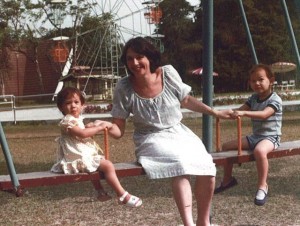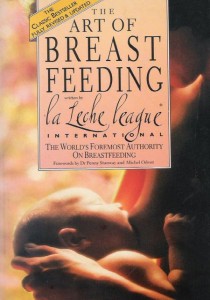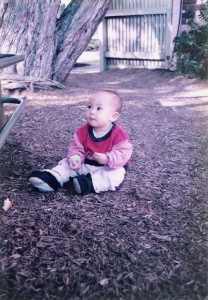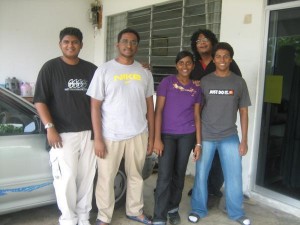Luqman Michel has thought long and hard about dyslexia—its causes and how to help those children afflicted with it. He runs a blog called Luqman’s Dyslexia Blog, which distills his experiences teaching dyslexic children. Here he talks about how he got started and the teaching methods he uses.
When did you start teaching dyslexic children?
My first dyslexic student (John—not his real name) came to me in late 2004. His father, who was my neighbour and friend, was concerned that after almost a year of having attended primary one, John was unable to read even a simple sentence in English. Despite telling John’s father that I do not give tuition classes he kept insisting that I should help his son. John was the only one son among four children and his father wanted him to be able to at least pass and get a basic certificate in SPM (Ed: equivalent to the British ‘O’ levels).
After teaching John for three days, I wanted to give up. I found him to be simply not ‘teachable’. Only then did his father tell me that John was dyslexic. That was the first time I came across the word ‘dyslexia’. I read up as much as I could about it and did a simple correspondence course on dyslexia. The course, by the way, was a rip-off as there was not much information in the course that you could not find on the internet.
By this time, I had developed a bond with John, who was a very lovable child. So I took up the challenge to teach him and most of what I know today about dyslexia I learnt from him and the other dyslexic children I taught in the last five years.
In your experience, what is the biggest challenge that these children face?
The biggest challenge that these children face is trying to do what the majority of non-dyslexic students do quite easily—reading. I would liken a dyslexic child to a left-hander who is forced to do things with his right hand. Bear in mind that once a left-hander can use his right hand as well as a right-hander he becomes better than a right-hander as he can now use both his hands well. He has become ambidextrous. A dyslexic is an outside-the-box thinker, and once he is taught to think inside the box he becomes very good in what he does.
How do you help/teach them to read?
I do not agree with choosing between the phonics method of teaching and the whole language or whole word method of learning. I don’t see why one has to choose one over the other. With Malay and Han Yu Pin Yin (Romanised Mandarin), all I do is teach them phonetically as all the words in both these languages can be read phonetically.
However, this is not the case with English. Many English words are irregular and cannot be read phonetically. As such, I introduce sight words right from lesson one. Without using sight words you will be unable to read storybooks for at least a year. With the introduction of just a couple of sight words you can begin reading from the first lesson. Please view my lessons commencing from the month of March. With John, I did nothing but reading for a whole year. His father insisted that I teach him to do exercises from workbooks. I was adamant about just sticking to reading, as I believed that all those exercises could be easily tackled if his reading was. Sure enough, his comprehension level improved and exercises from the workbooks were easily accomplished by the second year.
Tell us about the lesson plans you prepare. How long does it take you to prepare a lesson?
The lesson plans that I have prepared and used with my students are based on what I learnt as a young boy. I modified them to suit the dyslexic students. In fact, these lessons are just as suitable for any other student who is learning to read in English.
I cannot remember how long it took me to prepare these lesson plans but they were based on trial and error, until I got the child to read fluently. I used the same method with all subsequent students and they started learning to read at a fast pace.
What is the rationale for teaching these kids the way that you do?
This is the most important part of the interview. If you understand this part, then teaching a dyslexic child becomes easy.
I found that these kids began to shut down when they were taught something illogical. I can still remember vividly when one of my students refused to say the word ‘fox’, pronouncing it instead as ‘fur-ox’. She just kept staring at me. I was getting very angry because it seemed like she was being stubborn. Fortunately it was about time for the class to end and she went home. I kept thinking about that episode the whole night and the following day.
When she came back for her lessons two days later, I asked her what sound that the letter ‘f’ makes and her quick answer was ‘fur/fer’. Similarly, she told me that the sound (phoneme) for the letter ‘b’ was ‘buh’ and ‘t’ ‘ter’/tuh’.
I then realised that this was why she had refused to say the word ‘fox’. As far as she was concerned the word should have been pronounced ‘fur-ox’. Yes, if the phoneme for the letter ‘f’ was ‘fur’ then the word ‘fox’ should be read the way she did.
I rang up a few tuition centres and found out that they all taught their students this way, which was obviously the wrong way. In fact, I remember that the kindergarten, which my son attended in the 1980s, also taught the alphabets wrongly.
They taught in a sing-song manner like this—‘A’ er apple, ‘B’ ber bat, ‘C’ kuh cat and so on. This is what confuses the dyslexic child. Non-dyslexic children somehow get over this but not so dyslexic children. To a dyslexic child, ‘A’ er apple does not make sense. It should be ‘A’ air apple. The phoneme for the letter ‘A’ in Apple is air and not er.
This is important so please let me continue with my elaboration. When I teach the words, bat, cat, fat, mat, pat, rat, and sat the dyslexic child learns them in no time. However, when I teach ‘A cat’ I see blank looks in the children’s faces again and again. I teach these children one-on-one and many of them give me the same blank look. I asked myself why and then it dawned on me that it was because it did not make sense to them. This is because the sound or phoneme of the letter ‘a’ in cat is air, for example, and the sound of ‘A’ in A cat is er. So I began to explain that they should not compare Malay and Han Yu Pin Yin with the English language. I explained that the letter ‘a’ has at least six sounds in English and that all the vowels have more than one phoneme (sound) in English unlike Malay and Han Yu Pin Yin. I jokingly told them that it is not they who are stupid but the English language. Believe me, this comment always brought a cheeky smile to their faces as they have often been called stupid by their schoolmates.
One more example is when I teach them the words: but, cut, gut, hut, jut, nut and rut. They learn these words easily, too. But they give me blank looks and I can see that their minds shut down when I teach them the word ‘put’. However, once I explain that they need to learn this as a sight word, they are well on their way again.
I went about checking for materials on shutting down and found nothing to support my finding until I came across a book called The Shut Down Learner by Dr Richard Selznick. I interviewed him for a series of articles on my blog. These interviews are a must read for anyone interested in finding out why dyslexics have a problem reading in English.
Why did you decide to put the lesson plans up on a website and make them freely available to everyone?
Some of my readers have asked me this question. My answer is simply because dyslexia does not only affect rich children. It also affects the poor. Some of the poorer parents will not be able to afford whatever I charge for the lessons. So why not give them away for free? The satisfaction that I get from getting to know the many parents from around the world who are grateful for these lessons is greater than what money can give. According to the Bible, “It is more blessed to give than to receive”. The meaning of this is deep, and it is only when you give freely that you are able to understand what it really means.
I decided to take a year off from teaching in order to devote my full attention to blogging and to reply emails. I will soon stop my blogging. I still have to pay some yearly charges to keep it on the net for another year or two. By blogging, I am able to reach more dyslexic students than if I were to just teach one-on-one. I am glad I did it.
You have written a book Excellent Student. Can everyone be a top student? How?
The answer is an obvious “of course”. Anyone can be a top student if they follow what is in my book. All my children were/are top students in their schools. Two of them were, in fact, top students in the state. My student, John, achieved 3 As, a B and a C for his UPSR last year. This is despite the fact that he was promoted from primary 4 to primary 5 in the middle of primary 4. That means he missed half a year of primary 4 and half a year of primary 5. Of course, I used all the tricks that I have elaborated on in my book.











[…] This post was mentioned on Twitter by johnson and Skillado, Skillado. Skillado said: Teaching Dyslexic Kids To Read http://bit.ly/9tIxtb #dyslexia #teaching #reading […]
i like this blog for dyslexic people i also made a site
to help dyslexic people with vocabulary
keep up the good work
thanks
my child is dyslexic he cant read and in maths also
Dear Mr.Luqman,
It is pleasure to have read your interview, which gives me a lot of hope for my son who is 8 & who I believe is suffering from dyslexia. During his KG years & initially when he was in G1 he seemed to be quite okay & there was no problem with his reading. Unfortunately since the last 2 years his reading skills have dropped. He is otherwise intelligent & is an adorable child. Incidentally he was diagnosed with a condition called ” Benign Rolandic Epilepsy ” when he was about 2.5 years old. It is a very benign condition as the name suggests & most often than not ceases & completely goes away by teenage at the latest. This condition, we are told now, is best controlled if not treated with drugs as it is benign. Unfortunately for him he has been on a very, very mild dosage of epileptic drugs for the last 5.5 years which we believe has actually worked against him instead of helping him. These drugs once started can be weaned off only gradually & we hope he can be weaned off completely by the the time he is 10 GOD Almighty Willing. The saving grace being, the effects of these drugs go away with time & not permanent. Currently he is on a drug called ” Trileptal “, the generic drug being ” Oxcarbazepine “. Is it possible that he has developed Dyslexia due to the drugs he is taking ? If yes, can the same techniques that you use for the normal dyslexic children also work for him ? If not, what do you suggest we do ?
Awaiting your valuable reply in earnest.
Regards
Mukrim Habeeb
( Father )
Dear Mr.Mukrin Habeeb,
I don’t believe one can develop dyslexia by taken drugs.I have not seen such cases nor have I read about such a matter.My teaching method will work for any dyslexic child.
Where do you live? If you are in Malaysia, perhaps you could give me your land-line for me to contact you and get to know a little more about your son and we may be able to go on from there.
As your son is intelligent it is quite possible that he was coping well with his reading in the initial years. It is possible that he had memorized whatever he was taught and finds it difficult when the work load gets heavier.
Wish you well.
I have found this web page very helpful
and inspiring and would like to learn. More about your methods of teaching dyslexic children to read. My little brother is 10 years old and I just found out that he can’t read. Any. Advice on how to teach him would be greatly appreciated. Keep up the. Good work and Jah bless.
Thank you for your kind words Justi. I have written about how I have been teaching my dyslexic students in my blog. There are also lessons suitable for dyslexic students. Please read the blog from the first article onwards and I am sure you will be able to help your little brother. If you do have Skype perhaps we can chat and I may be able to guide you further.
God Bless.